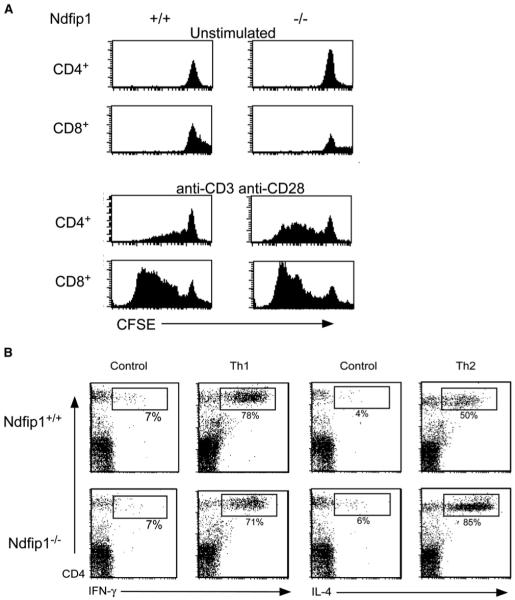Figure 5.
T Cells Lacking Ndfip1 Are More Likely to Proliferate and Produce Th2 Cytokines
(A) Spleen cells from mixed chimeras, 5–6 weeks posttransfer, were sorted based on GFP expression, labeled with CFSE, and stimulated with anti-CD3 (plate-bound) and anti-CD28, or left unstimulated. After 3 days, cells were stained, treated with saponin, and analyzed for loss of CFSE.
(B) Spleen and lymph node cells from 5- to 6-week-old Ndfip1−/− and Ndfip1+/+ mice were isolated and depleted of CD44+ cells and CD8+ cells. Cells were then stimulated with anti-CD3 and anti-CD28 or stimulated in the presence of Th1 or Th2 differentiating conditions. The percentages represent cytokine-producing cells as a percent of the total CD4+ cells. Data compiled from three independent experiments show that the percent of IL-4 producers averaged 39.8% ± 5.5% for Ndfip1+/+ and 72.9% ± 8.1% for Ndfip1−/− T cells; p < 0.04 paired Student’s t test. IFN-γ production was not statistically different between the two genotypes.

